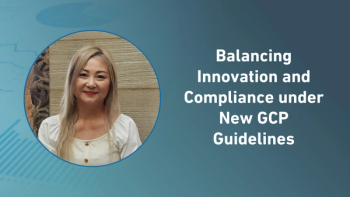
Cycle Time Reduction Remains Elusive Finds KMR Group’s Annual Cycle Time Trends Analysis
CHICAGO, Illinois, August 25, 2015 – KMR Group, a leader in analyzing R&D performance data for the biopharmaceutical industry, reports that the duration of clinical trials continues to hold steady or increase despite ongoing efforts by biopharmaceutical companies to reduce cycle times.
KMR Group assessed cycle time trends for more than 6,000 Phase II/III clinical trials using proprietary industry data across 27 companies going back to 2005. The analysis focused on clinical trials across all therapeutic areas.
KMR defines total cycle time as the interval from Protocol Approval to Clinical Trial Report (PA-CTR). The analysis reveals that both Phase II and III trials have increased significantly over the last 10 years and continue to rise. Phase III trials took a median 35.7 months for Industry in 2005-07 and takes 42.9 months in 2012-14. Not only have Industry median cycle times risen, but also when normalizing performance by company, the median change on a company basis also shows significant increases. Since 2005-07 cycle times have increased 16.4% in Phase II and 55.4% in Phase III on a per-company basis.
One obvious question is why, despite efforts to reduce time, cycle times continue to rise. Only with this understanding can companies set actionable controls to help counteract this negative trend.
We see the research environment shifting as regulators and payers demand more from companies to demonstrate safety, efficacy, and cost effectiveness. The result of these shifts are increasing patient sample sizes, longer treatment times and more carefully observed adverse effects. Indeed, a major factor as to why cycle times have risen are increasing treatment times in the trial deign. However, even when accounting for treatment time, there is still a large increase in study duration over this time frame, indicating treatment alone is not the cause.
Yet another dynamic brought on by these growing demands is the increased use of CROs to offload some of the rising burden. With it brings an entire new set of challenges such as how best to manage the CRO relationship, oversight, loss of operational control, quality concerns and still, pressure to keep costs low.
As the Industry evolves to a more patient centric view and the investment in personalized medicine (e.g., biomarkers, companion diagnostics) and rare diseases becomes more important we expect trial time to continue to increase. We also expect further demand from regulators to incorporate payer specific endpoints in trial design which will add complexity, cost, and time.
With the context above in mind we can now focus on how to help reduce trial cycle time moving forward. Over the last decade companies have focused on adopting EDC systems to help reduce data capture cycle times which has had a positive impact for companies. Most companies have already transitioned to EDC in a majority of trials so where should companies look next?
The next frontier in terms of reducing cycle times is in the study start-up and recruitment space. This encompasses an entire set of processes that can contribute to lengthy cycle times such as: country start-up, site initiation, and the performance of sites, as well as the specific countries companies are working in and how many.
If companies focus on this area they can achieve substantial reductions in trial time, but navigating the dynamic between major and emerging markets, site performance, and size of study is a complex endeavor. Companies that maneuver this area with more dexterity will be able to achieve large improvements, but companies that are unable to meet the rising demand and challenging environment from regulators and payers will continue to fall behind the Industry.
What can companies do next? KMR offers several programs for companies to accelerate their understanding of the startup and enrollment landscape including its Startup and Enrollment Assessment as well as other programs such as Trial Cost Assessment to help companies assess cost in light of operational choices such as use of emerging markets, volume of sites and disease.
Method
Each company’s median cycle time is calculated using their Phase II/III trials that contain a Clinical Trial Report date in the specified 3-year window.
The distributions refer to range of median values of all companies in Industry where each company’s median is comprised of trials specific to that company.
All data for analysis is submitted directly from sponsor companies at the detailed trial and site level and is thoroughly reviewed and queried to ensure accuracy and consistency, making it a reliable base and trusted source for comparative assessment. This data is not publicly available.
Newsletter
Stay current in clinical research with Applied Clinical Trials, providing expert insights, regulatory updates, and practical strategies for successful clinical trial design and execution.





.png)



.png)



.png)
.png)
